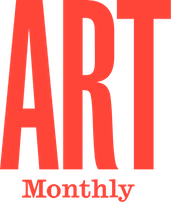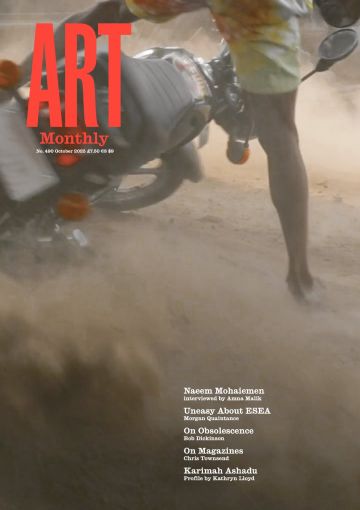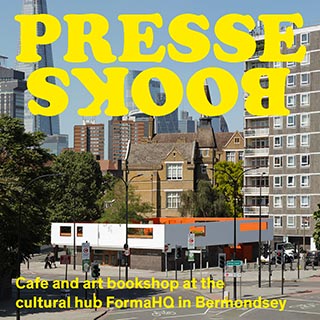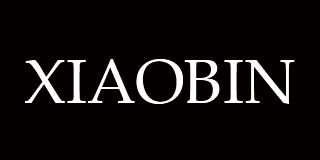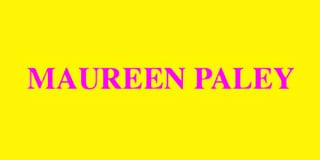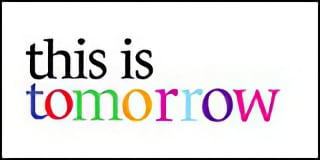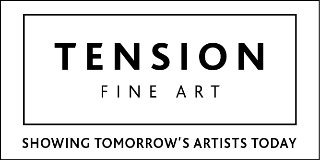Review
Never Again Peace
Chris Clarke encounters an art festival that accepts war is inevitable
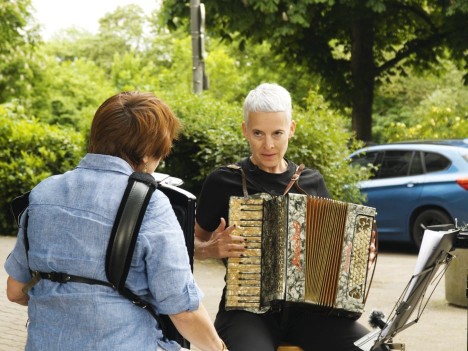
Candice Breitz, Dear Esther, 2025
Freiheitsplatz (Freedom Square) was renamed from Franzenplatz in both 1918 and 1938, and for steirischer herbst ’25 it has again been ceremonially rechristened. Ahmet Ögüt’s ephemeral intervention From Freedom Square to Freedom Square, 2025, is a reaffirmation of these emancipatory principles, simultaneously demonstrating the continuity of reactionary forces and of those who would actually favour the reinstatement of an authoritarian leader. The site is also the title and starting point of the media art collective LIGNA’s opening audio performance, for which visitors donned headphones to listen to ‘a play where there is nothing to see’. As we meandered around the courtyard, we listened to quotes from Hannah Arendt, Walter Benjamin and Peter Handke, at other times we were directed to locate a position and a partner and mirror each other’s poses, or raise fists or dance: ‘Are we sharing the same space, listening to the same sound?’ We were also asked to congregate, to brush against one another, and to gaze en masse at the imperious statue of Emperor Franz I, before being guided into the opulent, but empty, theatre of the Schauspielhaus. The piece exerts its own form of group hypnosis, gently easing its willing participants into unquestioning obedience.
Borrowing its title from Ernst Toller’s 1935 play Nie wieder Friede, ‘Never Again Peace’, this edition of steirischer herbst boldly states its opposition to the war in Ukraine, the Palestinian genocide, and the rise of Austria’s Freedom Party, amongst other instances of a resurgent far right. As Ekatarina Degot, the director of the festival, writes: ‘Our “Never Again Peace” is very much dictated by current events. There is no peace, true. But there is no “never again” anymore either.’ This sober assessment, in which ‘art has no specific freedom that would be bigger than the freedom of the rest of society’, and where artistic licence is subject to the conditions of the world around it, might explain the downcast, ruminative nature of much of the work on show as several artists delve into earlier worldwide conflicts. For example, Olaf Nicolai’s installation On Air, 2025, replays a BBC radio broadcast from 19 May 1942 in which the song of nightingales was increasingly drowned out by the ominous thrum of British bombers flying overhead. A second recording captures the sound of those same planes returning to base, 11 fewer than had originally set out. In Manuel Pelmuş and Frédéric Gies’s performance Tribute to Kurt Jooss’s ‘Green Table’, 2025 (a film of the original 1932 anti-war ballet is screened as part of the main exhibition at BAU), the bearded, long-haired Gies, encased in a white leotard emblazoned with images of internal organs, leaps and dances across the stage to pounding, pulverising techno beats, before literally waving a white flag. That mirrored exactly how I felt.
A timely and frankly more interesting work is Dear Esther, 2025, by Candice Breitz. Here, the artist recounts a dream in which she converses with the late Jewish anti-fascist Esther Bejarano, who survived Auschwitz as a teenager by learning to play the accordion for the camp’s Mädchenorchester (Girls’ Orchestra). Later, she returned to Germany from Israel, horrified by the Nakba and the young nation’s treatment of its Palestinian population. The film documents Esther as she reacquaints herself with the instrument and the wartime favourite ‘Bel Ami’, while capturing Breitz’s own attempts to learn the song. A thoughtful and touching story, perhaps, but one that the artist deftly contrasts with recent coverage of Elon Musk’s Sieg Heil salute at a Donald Trump rally, the influencer Yair Netanyahu (the son of the Israeli prime minister) and his adoption by the neo-Nazi fringe, and the emergent, online ‘alt-right’ movement. Politics makes strange bedfellows, as they say, but the alliance between Zionists and declared anti-Semites remains a profoundly disturbing development (see Sarah James’s feature ‘Anti-Anti-Semitism or the “Alt-Right”?” in AM440).
In the performative reading House of Styria, 2025, Max Hõfler and Andreas Unterwegger offer a descriptive tour of this metaphorical dwelling, unearthing its secret cellars and unexposed foundations. Every stanza opened with the refrain ‘to our right’, while the duo repeatedly turned in that direction, gradually wrapping themselves in the cables of their microphones. Yet it is the lines ‘as legal as / a semiautomatic pistol / Glock 19 / and a stock-sawn / mercury over-and-under shotgun / in a school backpack’ that cause a distinct ripple of unease among the audience; ten people had been killed and injured in a mass shooting at Graz’s Dreierschützengasse secondary school on 10 June 2025.
Mostly, however, when the artists do address contemporary issues, they tend towards deflection, ambiguity and self-abnegation. Perhaps it is the title itself, ‘Never Again Peace’, that provokes this sense of pessimism or, at least, realpolitik (certainly, overt criticism of Israel is muted in Austrian politics). Artists, like everyone else, have to negotiate a highly polarised and precarious political terrain, with watchful critics eager to pounce on any perceived infraction. Still, at a time when censorship and condemnation are being disingenuously endorsed by cynical parties, it is concerning to see artists so cautiously parsing their language.
In the courtyard of BAU, the former Bauer factory renamed, like Freedom Square, for the duration of the festival, Illya Pavlov’s large, tombstone-like slab greets visitors. Etched into its surface is the message ‘We Want Piece’, deliberately misspelled and alluding to a grasping, consumerist culture that prioritises accumulation over solidarity. Meanwhile, the Austrian collective Gelatin has invited individual visitors to descend into the factory’s underground chambers to summon a Stygian boatman to ferry them across the stagnant waters before disembarking into a dingy installation of indistinct objects and glowing embers that radiate warmth. While assuredly atmospheric, the experience ultimately fizzles out, generating more heat than light.
A similarly infernal encounter awaits the viewer in Nástio Mosquito’s three-stage performance and installation They The Them Are We: Mono(i)Dialogues, 2025. In a red-lit attic, the artist welcomes visitors to take a shot of schnapps before leading them into a screening of his animated film. A musical supergroup of paper cut-outs, including Miles Davis, Bob Marley and Mosquito himself, perform a concert while historic figures such as Pope John Paul II and Madonna, Nelson Mandela and Adolf Hitler, Mikhail Gorbachev and Martin Luther are paired off in conversation. Despite occasional, offhand laments for ‘the children in Gaza’, the figures remain caught up in petty rivalries and philosophical debates. At the film’s conclusion, the audience is led into a final space ‘for reflection’ replete with clusters of irregularly shaped mirrors. It is a chastening, awkward moment for our white, well-meaning audience, although, notably, Mosquito doesn’t spare himself. At least we’re all equally culpable.
‘steirischer herbst ’25: Never Again Peace’ was held at various venues in Graz, Austria 18 September to 12 October 2025.
Chris Clarke is a critic and curator based in Vienna.
First published in Art Monthly 490: October 2025.
